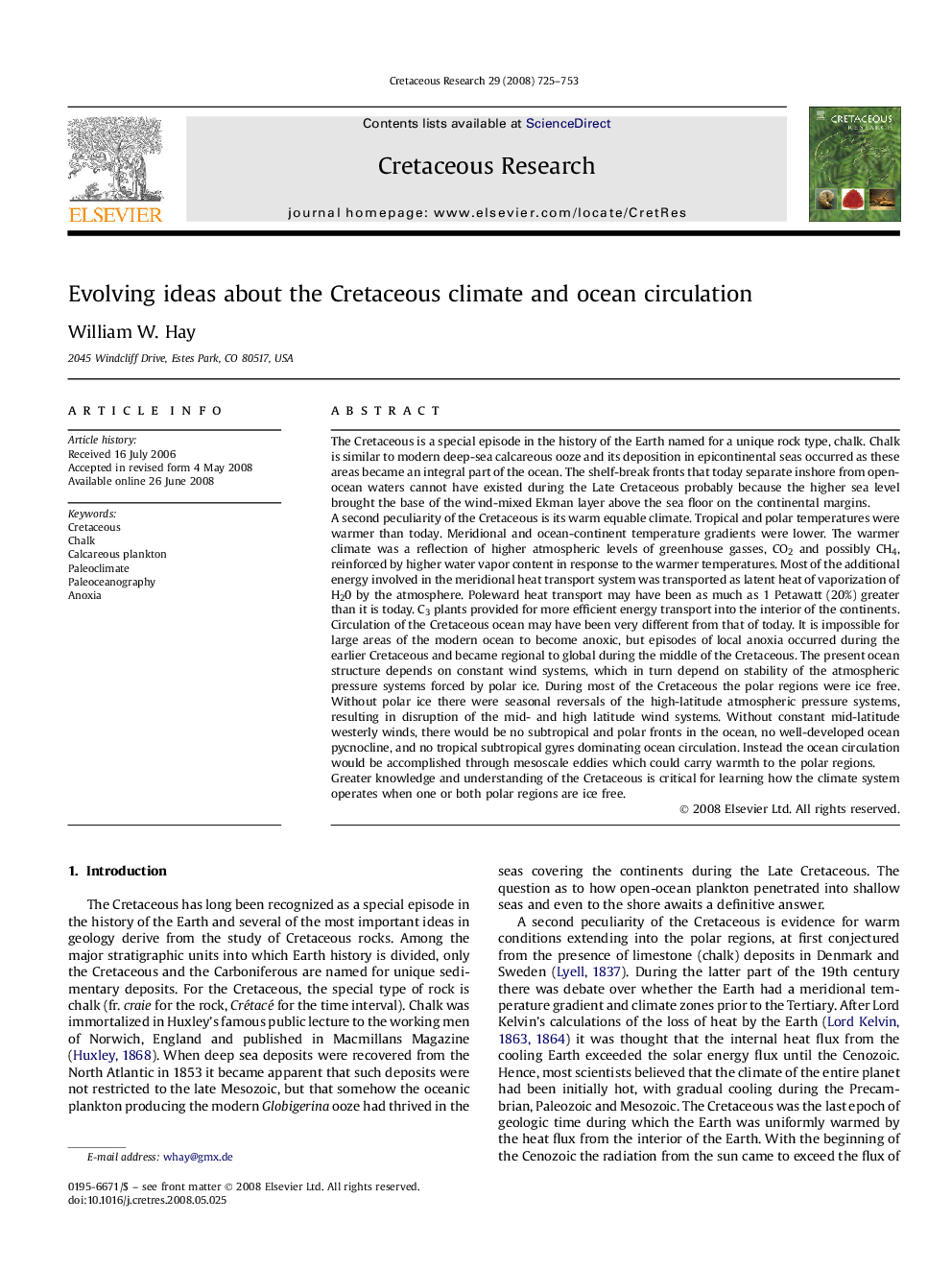| کد مقاله | کد نشریه | سال انتشار | مقاله انگلیسی | نسخه تمام متن |
|---|---|---|---|---|
| 4747691 | 1642090 | 2008 | 29 صفحه PDF | دانلود رایگان |

The Cretaceous is a special episode in the history of the Earth named for a unique rock type, chalk. Chalk is similar to modern deep-sea calcareous ooze and its deposition in epicontinental seas occurred as these areas became an integral part of the ocean. The shelf-break fronts that today separate inshore from open-ocean waters cannot have existed during the Late Cretaceous probably because the higher sea level brought the base of the wind-mixed Ekman layer above the sea floor on the continental margins.A second peculiarity of the Cretaceous is its warm equable climate. Tropical and polar temperatures were warmer than today. Meridional and ocean-continent temperature gradients were lower. The warmer climate was a reflection of higher atmospheric levels of greenhouse gasses, CO2 and possibly CH4, reinforced by higher water vapor content in response to the warmer temperatures. Most of the additional energy involved in the meridional heat transport system was transported as latent heat of vaporization of H20 by the atmosphere. Poleward heat transport may have been as much as 1 Petawatt (20%) greater than it is today. C3 plants provided for more efficient energy transport into the interior of the continents.Circulation of the Cretaceous ocean may have been very different from that of today. It is impossible for large areas of the modern ocean to become anoxic, but episodes of local anoxia occurred during the earlier Cretaceous and became regional to global during the middle of the Cretaceous. The present ocean structure depends on constant wind systems, which in turn depend on stability of the atmospheric pressure systems forced by polar ice. During most of the Cretaceous the polar regions were ice free. Without polar ice there were seasonal reversals of the high-latitude atmospheric pressure systems, resulting in disruption of the mid- and high latitude wind systems. Without constant mid-latitude westerly winds, there would be no subtropical and polar fronts in the ocean, no well-developed ocean pycnocline, and no tropical subtropical gyres dominating ocean circulation. Instead the ocean circulation would be accomplished through mesoscale eddies which could carry warmth to the polar regions.Greater knowledge and understanding of the Cretaceous is critical for learning how the climate system operates when one or both polar regions are ice free.
Journal: Cretaceous Research - Volume 29, Issues 5–6, October–December 2008, Pages 725–753